
The Vibrant Melting Pot of Zamboanga City
Explore Zamboanga City: A vibrant cultural hub in the Philippines with rich heritage, stunning beaches, and delicious cuisine. Perfect for history buffs, nature lovers, and food enthusiasts.
Zamboanga City, often referred to as the 'City of Flowers,' is a captivating destination in the Philippines. This coastal city is a unique blend of cultures, with Spanish, Muslim, and indigenous influences creating a rich tapestry of traditions and heritage. The city is known for its colorful vinta boats, which are a symbol of the region's maritime history and cultural diversity. One of the must-visit spots in Zamboanga City is the Fort Pilar Shrine, a historic Spanish fort that now serves as a place of worship and a museum. For nature enthusiasts, the Great Santa Cruz Island is a paradise with its pink sand beaches and vibrant marine life. Don’t miss the chance to explore Pasonanca Park, a lush green space with a treehouse and beautiful gardens. Zamboanga City is also a food lover’s haven. The local cuisine is a delightful mix of flavors, with seafood being a staple. Try the curacha (spanner crab) or the city's famous satti (grilled meat skewers served with a spicy sauce). The warm and welcoming locals, known for their Chavacano dialect, add to the charm of this fascinating city.
Local tips in Zamboanga City
- Learn a few basic phrases in Chavacano, the local dialect, to connect better with the locals.
- Visit Fort Pilar Shrine during weekdays to avoid the weekend crowds.
- For the best experience on Great Santa Cruz Island, go early in the morning to enjoy the serene pink sand beaches before they get crowded.
- Try the local seafood dishes, especially curacha and satti, at the city's public markets for an authentic taste.
- Carry cash, as many small shops and eateries may not accept credit cards.
Neighbourhoods in Zamboanga City
The Vibrant Melting Pot of Zamboanga City
Zamboanga City, often referred to as the 'City of Flowers,' is a captivating destination in the Philippines. This coastal city is a unique blend of cultures, with Spanish, Muslim, and indigenous influences creating a rich tapestry of traditions and heritage. The city is known for its colorful vinta boats, which are a symbol of the region's maritime history and cultural diversity. One of the must-visit spots in Zamboanga City is the Fort Pilar Shrine, a historic Spanish fort that now serves as a place of worship and a museum. For nature enthusiasts, the Great Santa Cruz Island is a paradise with its pink sand beaches and vibrant marine life. Don’t miss the chance to explore Pasonanca Park, a lush green space with a treehouse and beautiful gardens. Zamboanga City is also a food lover’s haven. The local cuisine is a delightful mix of flavors, with seafood being a staple. Try the curacha (spanner crab) or the city's famous satti (grilled meat skewers served with a spicy sauce). The warm and welcoming locals, known for their Chavacano dialect, add to the charm of this fascinating city.
When is the best time to go to Zamboanga City?
Iconic landmarks you can’t miss
KCC Mall De Zamboanga
Discover the vibrant shopping scene at KCC Mall De Zamboanga, where local culture meets modern retail experiences in a beautiful setting.
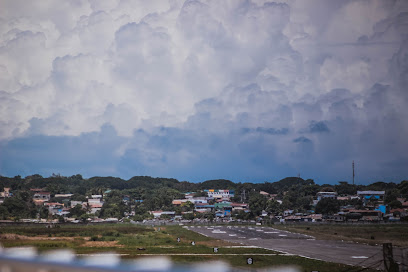
Dennis Coffee Garden
Discover a serene coffee haven in Zamboanga del Sur, where local flavors and a tranquil ambiance create unforgettable moments.
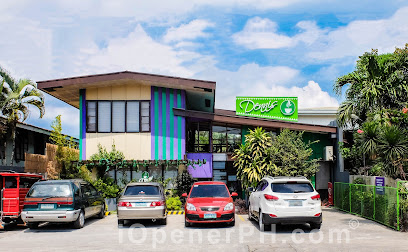
Paseo del Mar
Experience the breathtaking views and vibrant culture at Paseo del Mar, Zamboanga's premier waterfront park and tourist attraction.
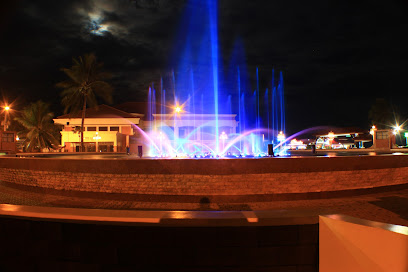
Alavar Seafood Restaurant
Discover the essence of Zamboanga's seafood culture at Alavar Seafood Restaurant, where fresh catches meet local culinary traditions.
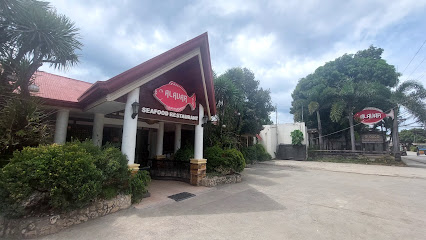
Zamboanga Port
Discover the vibrant culture and breathtaking views at Zamboanga Port, your gateway to the enchanting Sulu Sea and its hidden treasures.

Grand Astoria Hotel
Discover the charm of Zamboanga at Grand Astoria Hotel, where comfort meets local culture for an unforgettable stay.
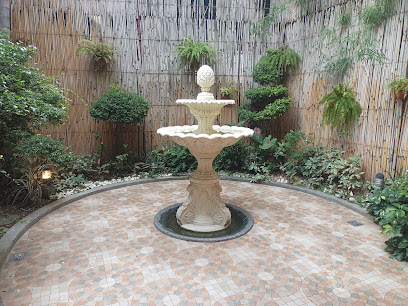
Zamboanga International Airport
Experience the vibrant culture and stunning landscapes of Mindanao through Zamboanga International Airport, your gateway to adventure.
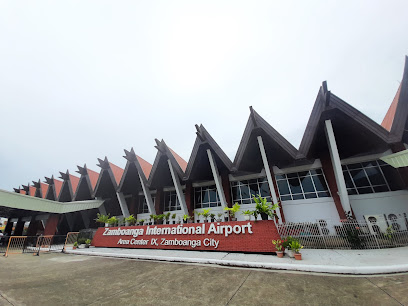
Fort Pilar Shrine
Explore the sacred beauty and historical significance of Fort Pilar Shrine in Zamboanga, a must-visit destination for cultural and spiritual enrichment.
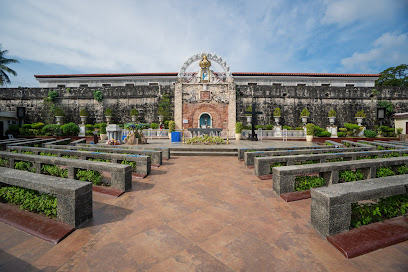
Magay - Zamboanga City Public Market
Discover the vibrant Magay Public Market in Zamboanga City, where local flavors and culture come alive in a lively shopping experience.
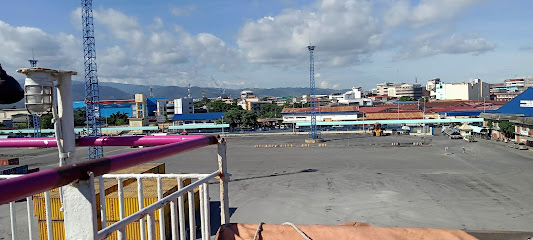
Hacienda de Palmeras
Discover the perfect blend of comfort and culture at Hacienda de Palmeras, your ideal hotel in Zamboanga, Philippines.

Plaza Pershing
Explore the lush beauty and tranquil ambiance of Plaza Pershing, a serene park in the heart of Zamboanga, perfect for relaxation and local culture.

Pasonanca Park
Explore the lush landscapes and cultural heritage of Pasonanca Park, a serene urban escape in Zamboanga, perfect for relaxation and adventure.
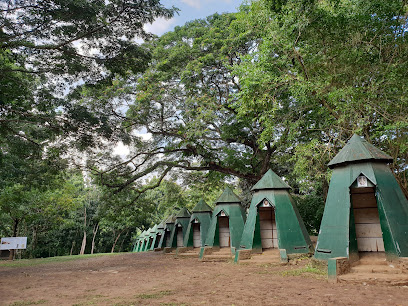
R.T. Lim Boulevard
Explore the vibrant R.T. Lim Boulevard in Zamboanga, a scenic waterfront promenade offering stunning views, local culture, and recreational activities for every traveler.
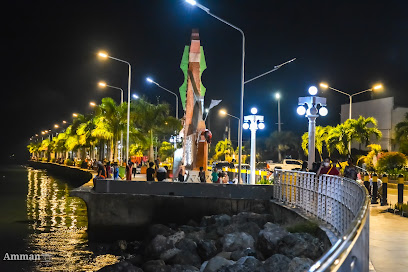
Punto de Dissembarco De Rizal en Dapitan
Discover the rich history of Dr. Jose Rizal at Punto de Disembarcadero De Rizal in Dapitan, where heritage meets stunning coastal views.
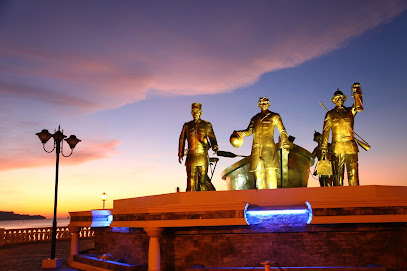
National Museum Western-Southern Mindanao Regional Museum (Zamboanga)
Explore the rich cultural heritage of Western-Southern Mindanao at the National Museum in Zamboanga, a historical landmark filled with fascinating exhibits.

Unmissable attractions to see
Paseo del Mar
Explore Paseo del Mar, a scenic park beside Fort Pilar in Zamboanga, where natural beauty meets vibrant local culture.
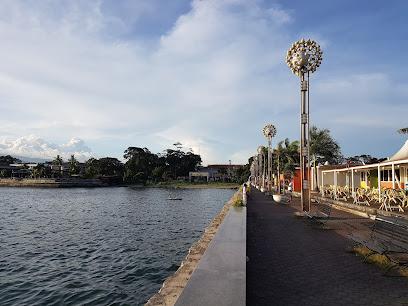
Plaza Pershing
Explore Plaza Pershing: A tranquil park in Zamboanga, blending natural beauty with rich cultural experiences for every traveler.

Pasonanca Park
Experience the natural beauty and tranquility of Pasonanca Park, a lush urban oasis in Zamboanga, perfect for relaxation and outdoor activities.
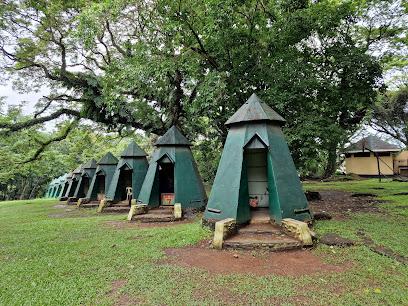
R.T. Lim Boulevard
Explore the scenic R.T. Lim Boulevard in Zamboanga, where stunning coastal views and vibrant local culture await every traveler.

National Museum Western-Southern Mindanao Regional Museum (Zamboanga)
Discover the cultural treasures of Zamboanga at the National Museum of Western-Southern Mindanao, where history and heritage come alive.

Lantawan Grassland
Experience the serene beauty of Lantawan Grassland, a picturesque tourist attraction in Zamboanga del Sur, perfect for nature lovers and adventurers.
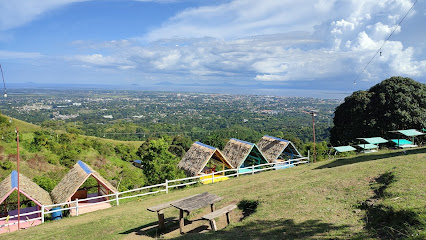
Limpapa Bridge
Explore the stunning Limpapa Bridge in Zamboanga, where breathtaking views and local culture come together for a memorable experience.
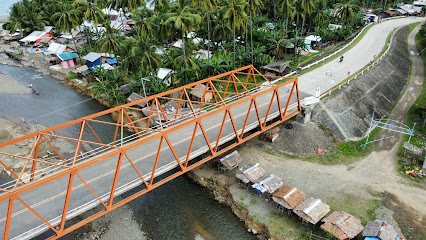
Zamboanga City Hall
Explore the historic Zamboanga City Hall, a stunning blend of culture and governance in the heart of Zamboanga City.

Abong-abong Park
Experience nature's tranquility at Abong-abong Park in Zamboanga, a beautiful oasis for relaxation, recreation, and cultural exploration.
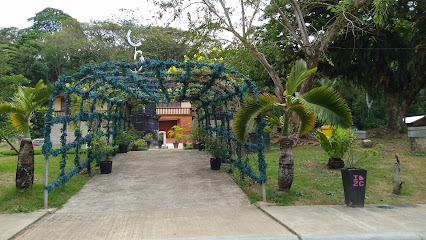
La Jardin de Maria Clara Lobregat
Experience natural beauty and local culture at La Jardin de Maria Clara Lobregat in Zamboanga, a serene park perfect for relaxation and family outings.

Butterfly Garden
Discover the beauty of nature at Zamboanga's Butterfly Garden, a must-visit tourist attraction filled with vibrant butterflies and lush greenery.
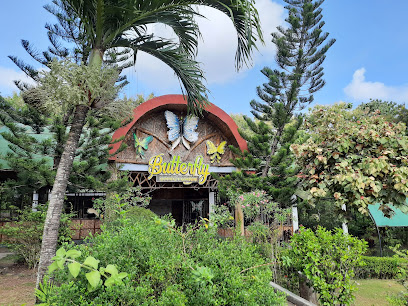
Rizal Park
Discover the tranquil beauty and historical significance of Rizal Park in Zamboanga, a perfect spot for relaxation and cultural exploration.
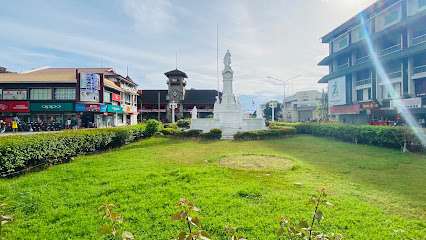
Grande Santa Cruz Island
Explore the stunning Grande Santa Cruz Island in Zamboanga, a tropical paradise of pristine beaches, vibrant marine life, and rich cultural experiences.
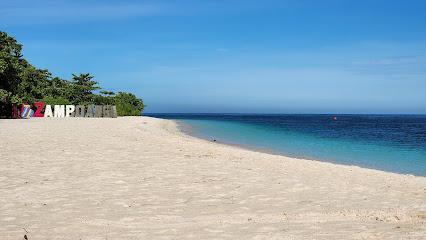
Merloquet Falls
Experience the enchanting beauty of Merloquet Falls in Zamboanga Sibugay, a tranquil paradise perfect for nature lovers and adventure seekers alike.
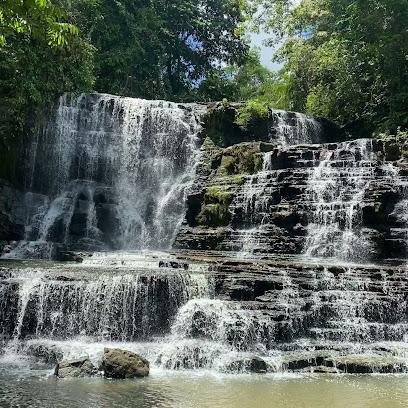
Limpapa Viewing Deck
Discover stunning landscapes and serene experiences at Limpapa Viewing Deck, a captivating tourist attraction in Zamboanga del Norte, Philippines.

Essential places to dine
Jimmy's Satti Haus
Discover authentic local flavors at Jimmy's Satti Haus – your family-friendly dining destination in Zamboanga.
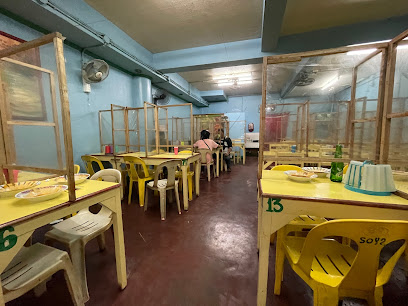
Village Family Restaurant Zamboanga
Discover authentic Filipino cuisine at Village Family Restaurant in Zamboanga - where every meal tells a story of tradition and flavor.
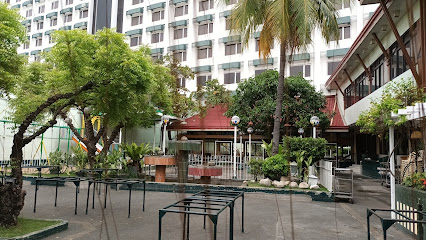
Family Fried Chicken Restaurant
Discover authentic Filipino fried chicken at Family Fried Chicken Restaurant in Zamboanga – where flavor meets tradition!
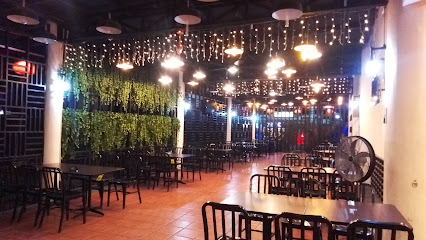
Mano-Mano na Greenfields
Discover the vibrant flavors of Zamboanga at Mano-Mano na Greenfields – where culinary excellence meets warm hospitality.

Ole Ole Malaysian Restaurant
Experience authentic Malaysian flavors at Ole Ole Malaysian Restaurant in Zamboanga - a culinary journey awaits!
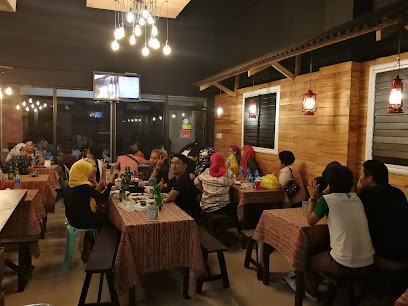
La Gran by Mano Mano
Discover the essence of Zamboanga through exquisite flavors at La Gran by Mano Mano, where every dish tells a story.
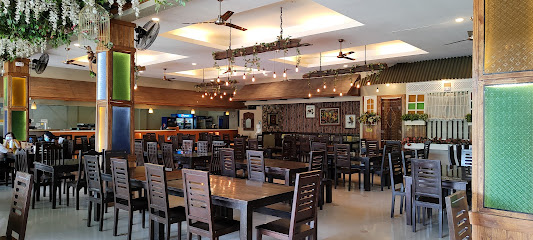
Chinito's Restaurant
Experience authentic Asian and Filipino cuisine at Chinito's Restaurant in Zamboanga – where every dish tells a story.
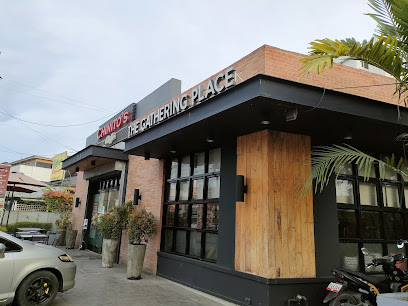
Kogi-Q
Experience authentic Korean BBQ at Kogi-Q in Zamboanga - where grilling meets great company!

Beats & Bites
Discover the vibrant flavors of Zamboanga at Beats & Bites, where culinary delights meet lively ambiance.
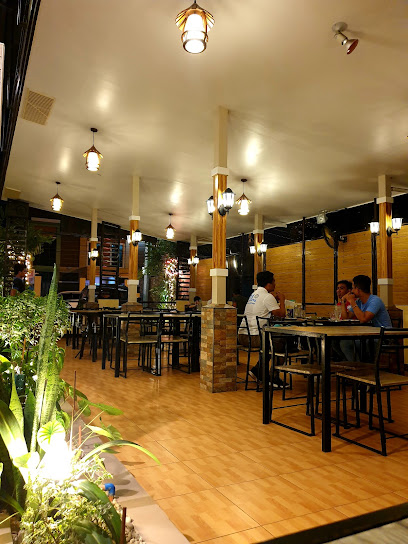
Hai San Seafood Market And Restaurant
Discover fresh seafood delights at Hai San Seafood Market and Restaurant in Zamboanga, where local flavors meet culinary excellence.

Casa Velyn
Experience authentic Filipino cuisine and international flavors at Casa Velyn in Zamboanga – where every meal tells a story.
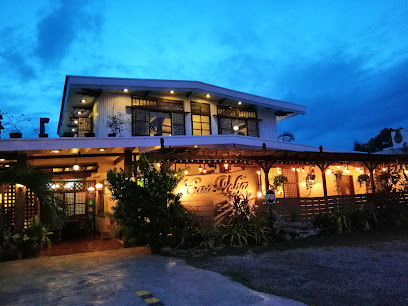
Mon's Grill
Experience authentic Filipino cuisine at Mon's Grill in Zamboanga - where every meal tells a story.
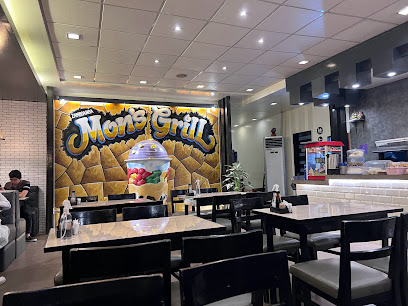
K-Town
Discover authentic Filipino cuisine at K-Town in Zamboanga del Sur – where flavors meet hospitality.

Kalye Siete Food Hub & KTV
Experience the best of Zamboanga's culinary delights and karaoke fun at Kalye Siete Food Hub & KTV.
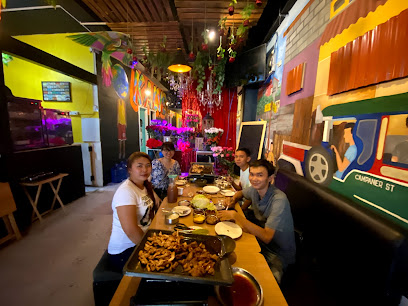
Jitaku
Discover authentic Japanese flavors at Jitaku in Zamboanga - where every dish tells a story of culinary excellence.
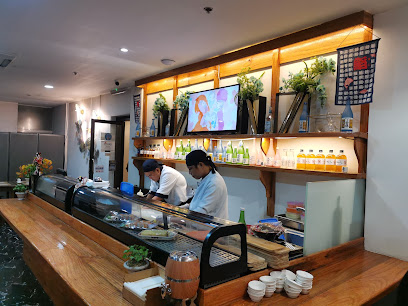
Markets, malls and hidden boutiques
KCC Mall De Zamboanga
Discover the vibrant shopping experience at KCC Mall De Zamboanga, where local charm meets modern retail and dining.
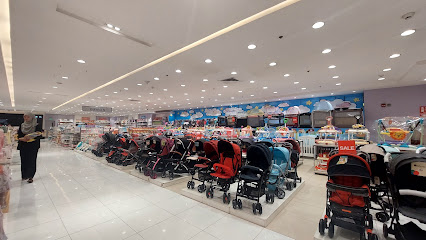
UNITOP
Experience the vibrant shopping scene at UNITOP, Zamboanga's premier department store offering everything from groceries to unique local crafts.
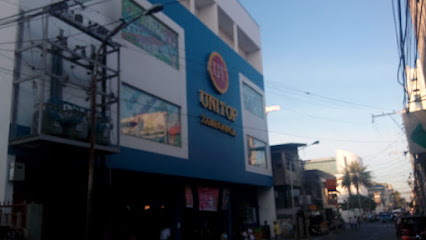
UNICITY
Discover the vibrant shopping experience at UNICITY, Zamboanga's premier department store offering a wide range of products for every need.
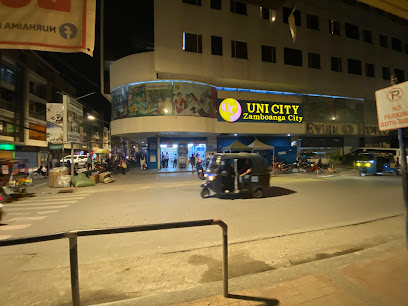
KCC Department Store
Experience the vibrant shopping scene at KCC Department Store in Zamboanga, where local culture meets a wide variety of products.
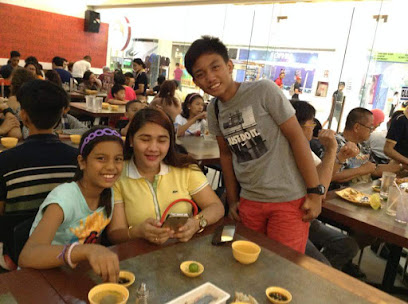
Trendlinesph Shop
Explore unique fashion at Trendlinesph Shop in Zamboanga, where local styles meet contemporary trends for an unforgettable shopping experience.
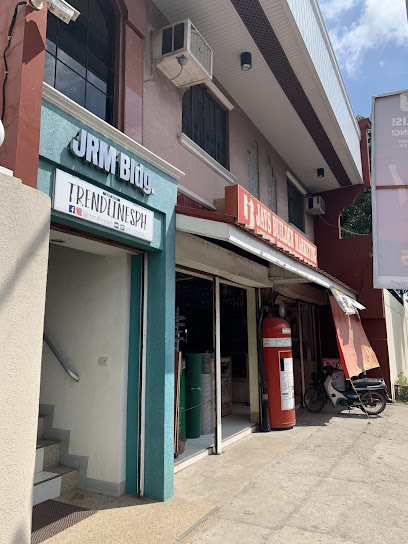
SM City Zamboanga
Experience a shopper's paradise at SM City Zamboanga, where retail, dining, and entertainment come together in a vibrant atmosphere.
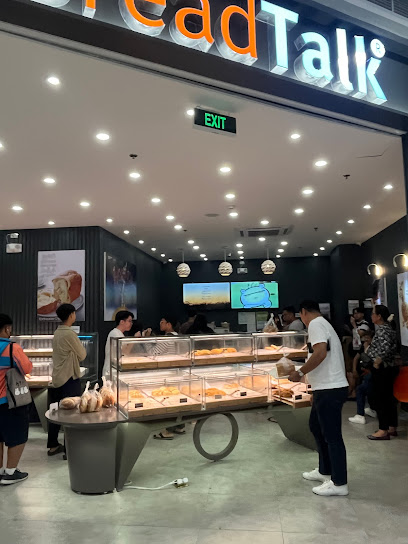
Ajummart Asian-Korean Grocery
Discover the vibrant flavors of Korea at Ajummart Asian-Korean Grocery in Zamboanga, your destination for authentic Asian ingredients and products.

RELX STORE - ZAMBOANGA CITY
Explore premium cigars and vaping products at RELX Store in Zamboanga City, where relaxation meets sophistication.
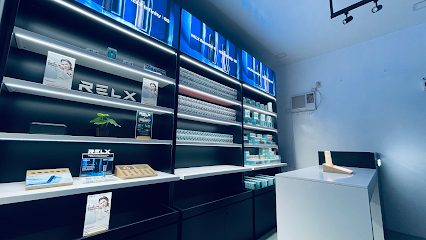
Zalo's Convenience Shop
Explore Zalo's Convenience Shop in Zamboanga for local snacks and essentials, a true taste of the region's vibrant culture.
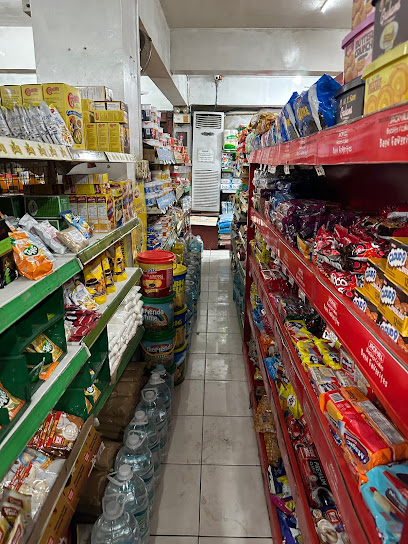
Yubi's Toy Shop
Explore Yubi's Toy Shop in Zamboanga, a haven for toy enthusiasts and collectors with unique finds and nostalgic treasures.
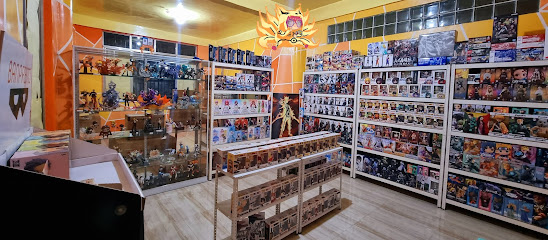
Koreana Look Ukay Shop
Explore Koreana Look Ukay Shop in Zamboanga, a treasure trove of affordable and stylish second-hand clothing reflecting vibrant Filipino culture.
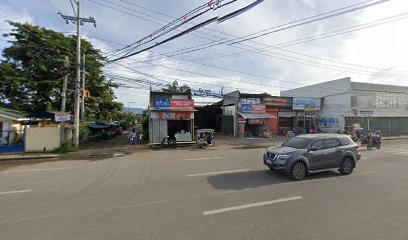
UNIQLO SM City Mindpro
Shop the latest fashion trends at UNIQLO SM City Mindpro, a vibrant clothing store in Zamboanga, perfect for all ages and styles.
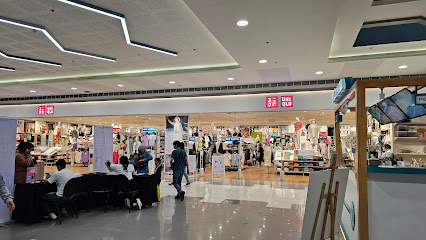
Penshoppe
Discover the latest fashion trends at Penshoppe, a chic clothing store in Zamboanga, offering stylish apparel for every occasion.
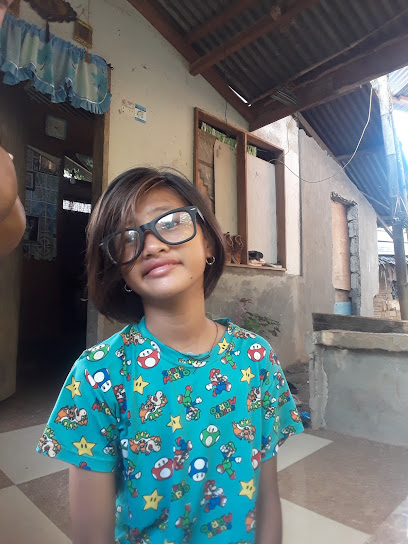
Zamboanga Native Products
Explore Zamboanga Native Products for unique souvenirs and a taste of local artistry in the heart of Zamboanga.

LE Style Caffee + Boutique
Experience fashion and relaxation at LE Style Caffee + Boutique in Zamboanga, where shopping meets a cozy café atmosphere.

Essential bars & hidden hideouts
The Bureau Superclub
Discover the electrifying nightlife at The Bureau Superclub, Zamboanga's top destination for music, dance, and unforgettable experiences.
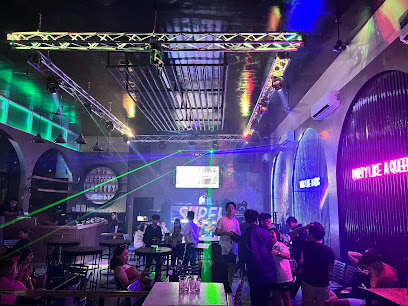
Hype
Discover the vibrant nightlife at Hype, Zamboanga's premier bar offering delicious drinks and lively entertainment in a welcoming atmosphere.
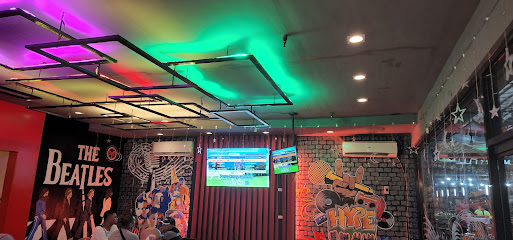
History Karaoke Bar and Cocktail Lounge
Experience the vibrant nightlife at History Karaoke Bar and Cocktail Lounge in Zamboanga, where singing and socializing unite for an unforgettable evening.
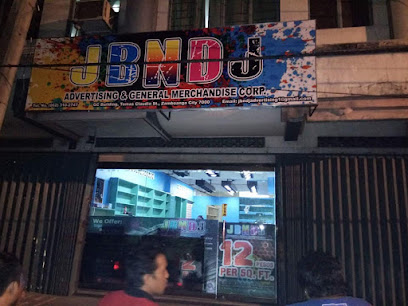
Shisha Dine & Bar
Experience the vibrant flavors and relaxing ambiance at Shisha Dine & Bar in Zamboanga, where every visit is a celebration of taste and culture.
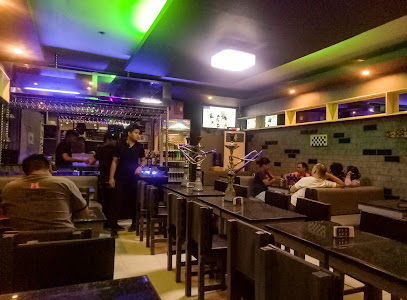
La Roma Restobar(New Location)
Discover the lively spirit of Zamboanga at La Roma Restobar, a vibrant bar perfect for drinks, entertainment, and local culture.
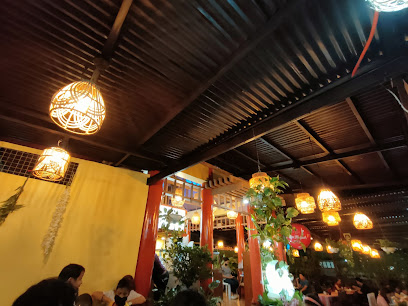
La Quatro
Experience the vibrant nightlife of Zamboanga at La Quatro, where local flavors meet a lively atmosphere and unforgettable entertainment.
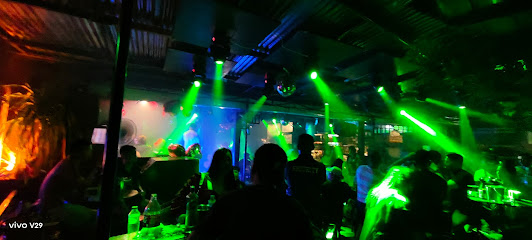
Club Bodega
Discover the nightlife of Zamboanga at Club Bodega, where great music and vibrant energy create unforgettable nights.
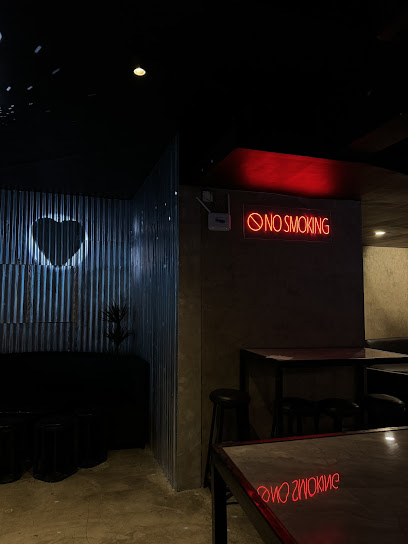
First Class
Discover the lively First Class Bar in Zamboanga, a top spot for cocktails, friendly service, and vibrant nightlife to capture your travel memories.
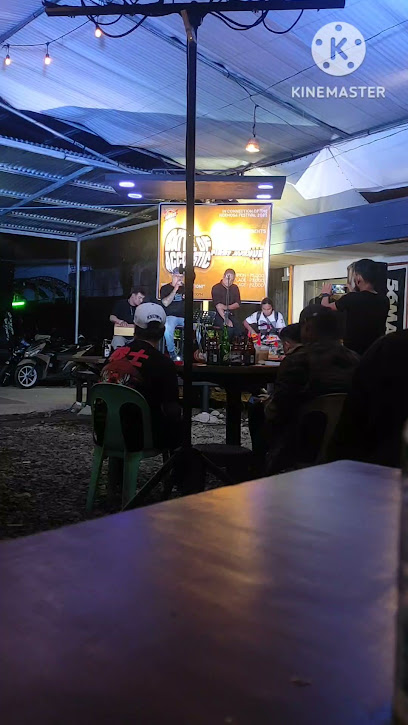
Daniel’s Bar
Discover the lively atmosphere of Daniel’s Bar in Zamboanga, where good drinks and friendly faces create unforgettable memories.
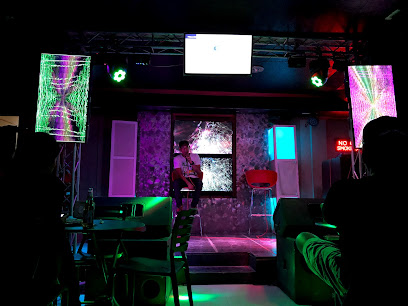
13 Spices Jazz Bar
Discover Zamboanga’s nightlife at 13 Spices Jazz Bar, where live jazz meets delightful cocktails in a vibrant atmosphere.
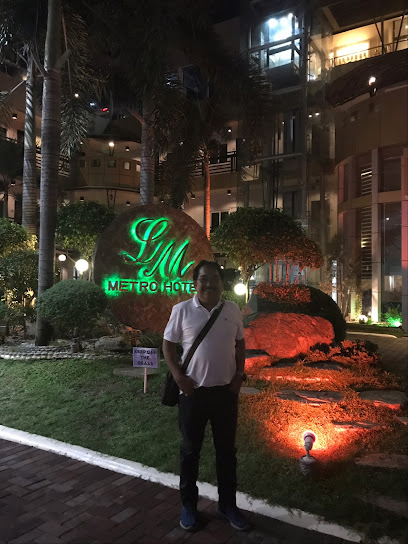
Queens Street Resto Bar
Experience the vibrant nightlife at Queens Street Resto Bar, where local flavors meet a lively atmosphere in Zamboanga.
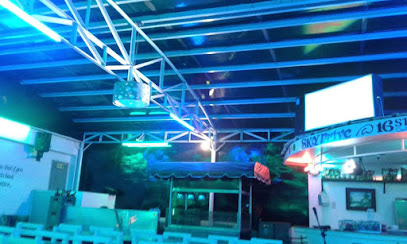
LA TABERNA
Discover the lively atmosphere of La Taberna in Zamboanga, where delicious drinks meet vibrant local culture and unforgettable experiences.
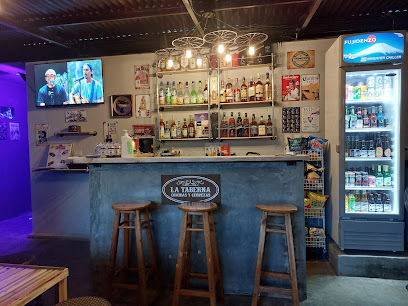
BASOLI Bar and Grill
Discover the vibrant taste of Zamboanga at BASOLI Bar and Grill, where local flavors meet a lively atmosphere.

Duh Bar
Experience the vibrant nightlife of Zamboanga at Duh Bar, where expertly crafted cocktails and a lively atmosphere await.
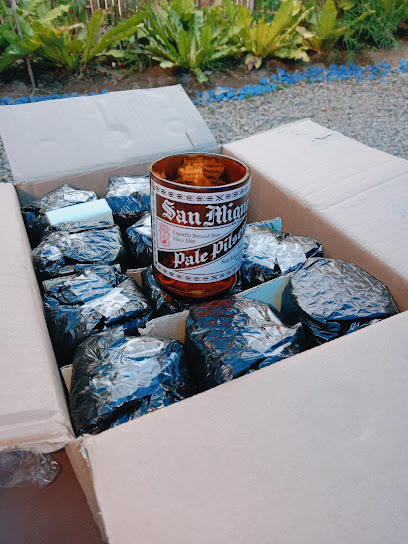
KTV Restobar
Experience the vibrant nightlife of Zamboanga at KTV Restobar, where karaoke, drinks, and fun come together for unforgettable evenings.
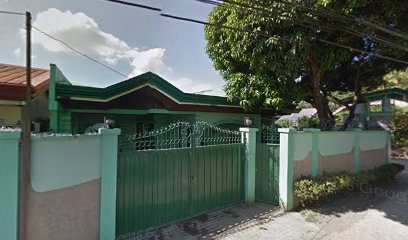
Local Phrases
-
- HelloKumusta
[koo-moo-sta] - GoodbyeAdios
[ah-dyos] - YesOo
[oh-oh] - NoIndi
[een-dee] - Please/You're welcomePalihug
[pah-lee-hoog] - Thank youGracias
[grah-syahs] - Excuse me/SorryPasayloa ko
[pah-sahy-loh-ah koh] - How are you?Kumusta ka?
[koo-moo-sta kah?] - Fine. And you?Maayo. Ikaw?
[mah-yoh. ee-kahw?] - Do you speak English?Kahibalo ka mag-Ingles?
[kah-ee-bah-loh kah mahg-eeng-lehs?] - I don't understandDili ko kasabot
[dee-lee koh kah-sah-boht]
- HelloKumusta
-
- I'd like to see the menu, pleaseGusto ko makakita sa menu, palihug
[goos-toh koh mah-kah-kee-tah sah meh-noo, pah-lee-hoog] - I don't eat meatDili ko manok
[dee-lee koh mah-nok] - Cheers!Mabuhay!
[mah-boo-hahy] - I would like to pay, pleaseGusto ko magbayad, palihug
[goos-toh koh mahg-bah-yahd, pah-lee-hoog]
- I'd like to see the menu, pleaseGusto ko makakita sa menu, palihug
-
- Help!Tabang!
[tah-bahng] - Go away!Layas!
[lah-yahs] - Call the Police!Tawag sa pulis!
[tah-wahg sah poo-lees] - Call a doctor!Tawag sa doktor!
[tah-wahg sah dohk-tohr] - I'm lostNawala ko
[nah-wah-lah koh] - I'm illSakit ko
[sah-keet koh]
- Help!Tabang!
-
- I'd like to buy...Gusto ko mopalit...
[goos-toh koh moh-pah-leet] - I'm just lookingNagatan-aw lang ko
[nah-gah-tahn-ahw lahng koh] - How much is it?Tagpila ni?
[tahg-pee-lah nee] - That's too expensiveMahal kaayo
[mah-hahl kah-ah-yoh] - Can you lower the price?Pwede pabarato?
[pweh-deh pah-bah-rah-toh]
- I'd like to buy...Gusto ko mopalit...
-
- What time is it?Pila ang oras?
[pee-lah ahng oh-rahss] - It's one o'clockAlas uno na
[ah-lahs oo-noh nah] - Half past (10)Kalahati na (sa dies)
[kah-lah-hah-tee nah sah dees] - MorningBuntag
[boon-tahg] - AfternoonHapon
[hah-pohn] - EveningGabii
[gah-bee] - YesterdayKagahapon
[kah-gah-hah-pon] - TodayKaron
[kah-ron] - TomorrowUgma
[oog-mah] - 1Isa
[ee-sah] - 2Dua
[doo-ah] - 3Tulo
[too-loh] - 4Upat
[oo-paht] - 5Lima
[lee-mah] - 6Unom
[oo-nom] - 7Pito
[pee-toh] - 8Walo
[wah-loh] - 9Siyam
[see-yahm] - 10Dies
[dees]
- What time is it?Pila ang oras?
-
- Where's a/the...?Asa ang...?
[ah-sah ahng] - What's the address?Unsa man ang address?
[oon-sah mahn ahng address] - Can you show me (on the map)?Pwede mo magpakita sa ako (sa mapa)?
[pweh-deh moh mahg-pah-kee-tah sah ah-koh sah mah-pah?] - When's the next (bus)?Kanus-a ang sunod (bus)?
[kah-noo-sah ahng soo-nod bus] - A ticket (to ....)Usa ka tiket (paingon sa ....)
[oo-sah kah tee-keht pah-eeng-gohn sa]
- Where's a/the...?Asa ang...?
History of Zamboanga City
-
Before the arrival of the Spanish in the 16th century, Zamboanga City was already an established settlement primarily inhabited by the Subanen people. The region was a hub for trade, with early settlers engaging in commerce with neighboring islands and traders from China, Malaysia, and Indonesia.
-
In 1635, the Spanish established a foothold in Zamboanga by constructing Fort Pilar as a defense against pirate attacks and as a base to spread Christianity. The fort became a significant military and religious center, symbolizing Spanish colonial power in Mindanao. During this period, the Chavacano language, a Spanish-based creole, emerged and is still spoken in Zamboanga City today.
-
Following the Spanish-American War, the Philippines was ceded to the United States in 1898. Zamboanga City became a part of the Moro Province under American rule. The Americans focused on infrastructure development, building roads, schools, and hospitals, which contributed to the modernization of the city.
-
During World War II, Zamboanga City was occupied by Japanese forces in 1942. The city experienced significant hardship and destruction during this period. In 1945, American and Filipino forces liberated Zamboanga, leading to the rebuilding of the city in the post-war era.
-
After gaining independence from the United States in 1946, Zamboanga City continued to grow as a regional center in Mindanao. However, during the Martial Law period under President Ferdinand Marcos (1972-1981), the city experienced political unrest and conflict. Despite these challenges, Zamboanga City remained resilient and continued to develop economically and culturally.
-
Today, Zamboanga City is known as 'Asia's Latin City' due to its rich Spanish heritage. It is a vibrant urban center with a diverse cultural landscape, blending indigenous, Spanish, American, and Asian influences. The city is famous for its colorful festivals, such as the Zamboanga Hermosa Festival, and its culinary delights, including curacha (a type of crab) and knickerbocker (a local dessert).
Zamboanga City Essentials
-
Zamboanga City is accessible via air, sea, and land. The Zamboanga International Airport (ZIA) has regular flights connecting to major cities such as Manila, Cebu, and Davao. By sea, ferries from Manila, Cebu, and other regional ports dock at Zamboanga Port. Buses and vans also travel to Zamboanga City from various parts of Mindanao.
-
Within Zamboanga City, local transportation options include jeepneys, tricycles, taxis, and buses. Jeepneys are the most popular and affordable means of transport, covering various routes across the city. Tricycles are ideal for short distances, while taxis offer a more comfortable option. For longer trips, buses and vans are available.
-
The official currency in Zamboanga City is the Philippine Peso (PHP). Credit cards are accepted in most hotels, restaurants, and larger shops, but it's advisable to carry cash for smaller establishments and local markets. ATMs are widely available throughout the city, including at the airport and major shopping centers.
-
Zamboanga City is generally safe for tourists, but it's important to stay vigilant. Avoid walking alone at night, especially in less crowded areas. Be cautious in neighborhoods like Canelar and Talon-Talon, which have higher crime rates. Always keep an eye on your belongings in crowded places and use registered taxis or rideshare services.
-
In case of an emergency, dial 911 for immediate assistance. The Zamboanga City Medical Center and other hospitals provide medical services. For police assistance, head to the nearest station or call the Zamboanga City Police Office. Always have a travel insurance policy that covers medical emergencies.
-
Fashion: Do dress modestly, especially when visiting religious sites. Avoid wearing revealing clothing. Religion: Do respect local customs and traditions. Remove your shoes when entering mosques and dress conservatively. Public Transport: Do respect seating arrangements and give up your seat for the elderly, pregnant women, and those with children. Don't eat or drink on public transport. Greetings: Do greet people with a smile and a slight nod. A simple 'Hello' or 'Kamusta' (How are you?) is appreciated. Eating & Drinking: Do try local dishes and accept food offerings graciously. Don't refuse hospitality, as it is considered impolite.
-
To experience Zamboanga City like a local, visit the Barter Trade Center for unique goods and souvenirs. Explore the local markets for fresh produce and traditional items. Engage with residents to learn about the city's rich history and culture. Don't miss the colorful Vinta boats at Paseo del Mar and sample local delicacies like curacha (spanner crab) and knickerbocker dessert.
Trending Landmark in Zamboanga City
-
KCC Mall De Zamboanga
-
Dennis Coffee Garden
-
Paseo del Mar
-
Alavar Seafood Restaurant
-
Zamboanga Port
-
Grand Astoria Hotel
-
Zamboanga International Airport
-
Fort Pilar Shrine
-
Magay - Zamboanga City Public Market
-
Hacienda de Palmeras
-
Plaza Pershing
-
Pasonanca Park
-
R.T. Lim Boulevard
-
Punto de Dissembarco De Rizal en Dapitan
-
National Museum Western-Southern Mindanao Regional Museum (Zamboanga)
Nearby Cities to Zamboanga City
-
Things To Do in Cagayan de Oro
-
Things To Do in Camiguin
-
Things To Do in Davao City
-
Things To Do in Bohol
-
Things To Do in Cebu City
-
Things To Do in Sandakan
-
Things To Do in Puerto Princesa
-
Things To Do in Palawan
-
Things To Do in Siargao
-
Things To Do in Boracay
-
Things To Do in Kota Kinabalu
-
Things To Do in Manado
-
Things To Do in Legazpi
-
Things To Do in Muara
-
Things To Do in Tagaytay

















